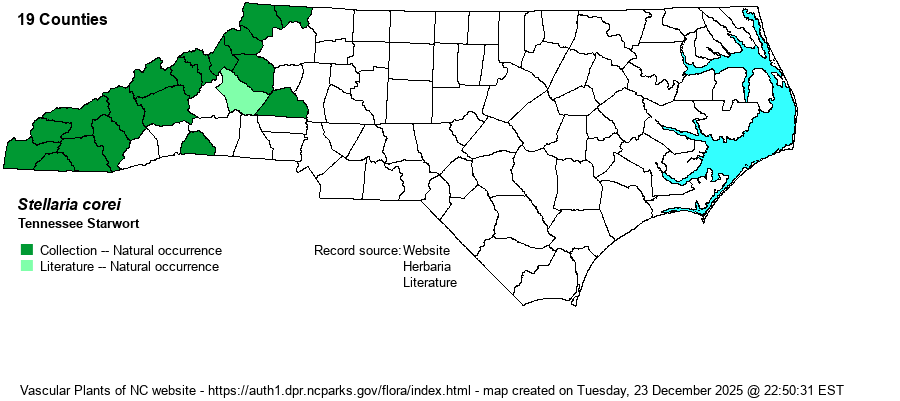| Author | Shinners | |
| Distribution | Throughout the Mountains, and ranging into the higher elevations in the western Piedmont.
This is a species of the Appalachians and the Ohio River Valley; it ranges from PA and IN south to southwestern NC and AL, apparently not found in SC or GA.
| |
| Abundance | Uncommon to locally fairly common in the Mountains, but rare in the nearby Piedmont. Surprisingly, this is still a Watch List species, as identified by the NCNHP. The website editors feel that it should have no status in the state. | |
| Habitat | This is a species of rich hardwood forests at mid- to high elevations, typically over 4000 feet, but certainly occurs much lower. |
| Phenology | Blooms from April to June, and fruits shortly after flowering. The plants wither by the end of May or into June. | |
| Identification | This species is very similar to the much more common and widespread S. pubera, but in this species the upper stem leaves usually have distinct petioles, whereas in the other the stem leaves are almost always sessile. Also, this species has quite long sepals, and they are acuminate, 7-10 mm (about 1/3-inch) long, whereas those in S. pubera are ovate and 3.5-6 mm (about 1/5-inch) long. As a result, the flower in S. corei has the sepals typically extending past the 5 white split petals, whereas as in S. pubera the sepals are shorter than the 5 white petals. Lastly, this species often grows in very dense colonies, whereas S. pubera is not as strongly colonial. See the S. pubera account and the Identification section for a general description of both. | |
| Taxonomic Comments | A few references, at least in the past, have the species under different names, though essentially all now have them split as good species.
| |
| Other Common Name(s) | Tennessee Chickweed. Most references use Tennessee Starwort as their common name, yet most other similar species are named as xxxxxx Chickweed, including the very similar Stellaria pubera [Star Chickweed]. | |
| State Rank | S3 | |
| Global Rank | G5? | |
| State Status | W1 | |
| US Status | | |
| USACE-agcp | | |
| USACE-emp | | |

